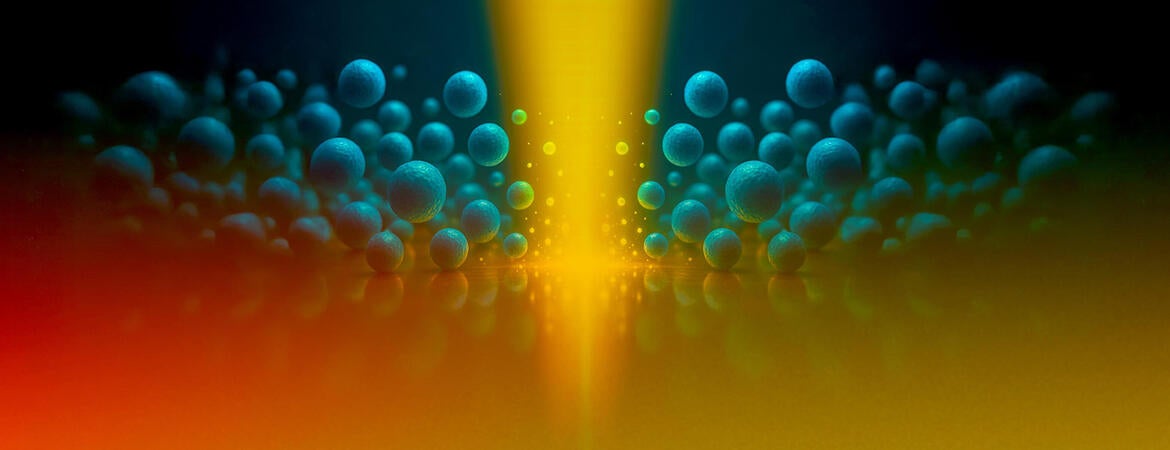
UC Riverside researchers have unveiled a powerful new imaging technique that exposes how cutting-edge materials used in solar panels and light sensors convert light into electricity—offering a path to better, faster, and more efficient devices.
The breakthrough, published in the journal Science Advances, could lead to improvements in solar energy systems and optical communications technology.
The research team, led by associate professors Ming Liu and Ruoxue Yan of UCR’s Bourns College of Engineering, developed a three-dimensional imaging method that distinguishes between two fundamental processes by which light is transformed into electric current in quantum materials.
One process, known as the photovoltaic, or PV, effect, is the well-known mechanism behind solar panels: incoming photons from light knock electrons loose in a semiconductor, creating a flow of electricity that accumulates at electrode contacts to provide electricity
The second process, called the photothermoelectric, or PTE, effect, is less familiar but just as important—especially in small-scale devices. In PTE, as light energy heats up electrons in the material, making them “hotter” than their surroundings, these energized electrons then naturally move toward cooler regions, generating electric current as they flow. These electrons tend to move away from their accumulated regions near the electrode, right against the PV effect.
“Before now, we knew both effects were happening, but we couldn’t see how much each one contributed and how they spatially distribute,” Liu said. “With our new technique, we can finally tell them apart and understand how they work together. That opens new ways to design better devices.”
The team focused on nanodevices made from molybdenum disulfide, or MoS₂ — a two-dimensional semiconductor just a few atoms thick — combined with gold electrodes. These ultrathin structures are drawing intense interest for next-generation electronics due to their unusual optical and electrical properties.
Using a specialized scanning method that funnels light through the tip of an atomic-force microscope, Liu and Yan’s teams were able to pinpoint where and how the PV and PTE effects occurred—down to the nanometer scale.
What they found surprised them: While the PV effect was expected at the junction where the gold and MoS₂ meet, the PTE effect extended much farther into the material than previously thought.
“This goes against the conventional wisdom,” Xu, the Ph.D. student who was the first author of the paper, added. “It shows that heat-driven effects can influence electrical output over much larger areas, even away from the metal contact.”
The team also discovered that by adding a thin layer of hexagonal boron nitride, or h-BN, over the MoS₂, they could steer heat sideways through the material. This redirected heat flow boosted the PTE effect by aligning temperature changes with variations in how the material responds to heat—essentially enhancing current production.
“Normally, you try to keep heat localized,” Xu said. “But in this case, letting it spread out actually helped.”
To separate the PV and PTE contributions, the researchers developed a new analysis method that changes the distance between the microscope tip and the sample. By tracking how the current signal changed with distance, and breaking it down using a technique called multi-order harmonic analysis, they could isolate the two effects for the first time in real space.
This innovation could help engineers better design light-detecting components in fiber-optic communication systems—where devices are getting ever smaller, and managing heat is increasingly important. It may also point the way toward more efficient solar power technologies, especially those that aim to harvest both light and heat.
“The idea that we can fine-tune a photodetector’s performance using heat flow is really exciting,” Liu said.
The study’s title is “Deciphering Photocurrent Mechanisms at the Nanoscale in van der Waals Interfaces for Enhanced Optoelectronic Applications.” Its lead author was Liu’s graduate student Da Xu. Co-authors from UCR include Qiushi Liu, Boqun Liang, Ning Yu, Xuezhi Ma, Yaodong Xu, Charlie Ding, Roger K. Lake, and Ruoxue Yan.
The team also collaborated with Takashi Taniguchi of Japan’s National Institute for Materials Science.
“We’re just beginning to uncover how light, heat, and electricity interact in these extraordinary materials,” Liu said. “There’s a lot more to discover.”
Click here for related article.




